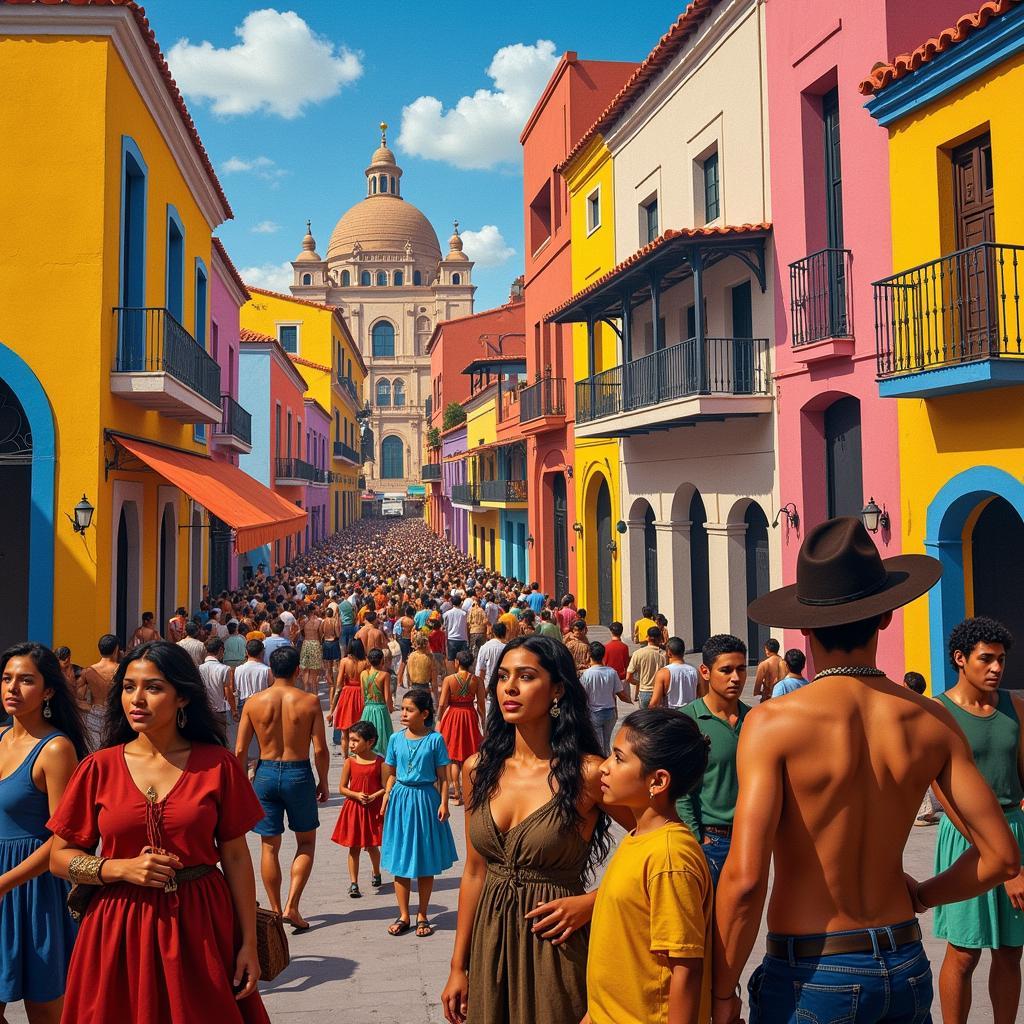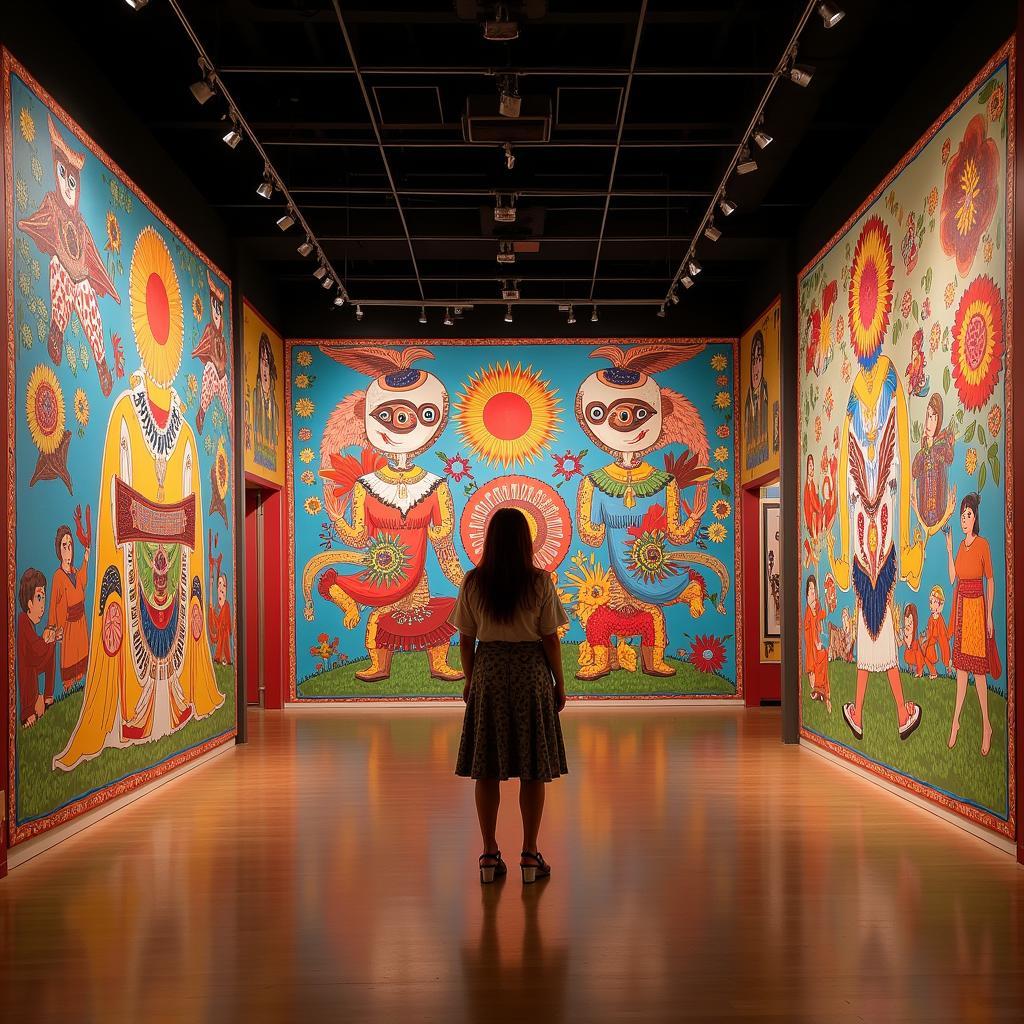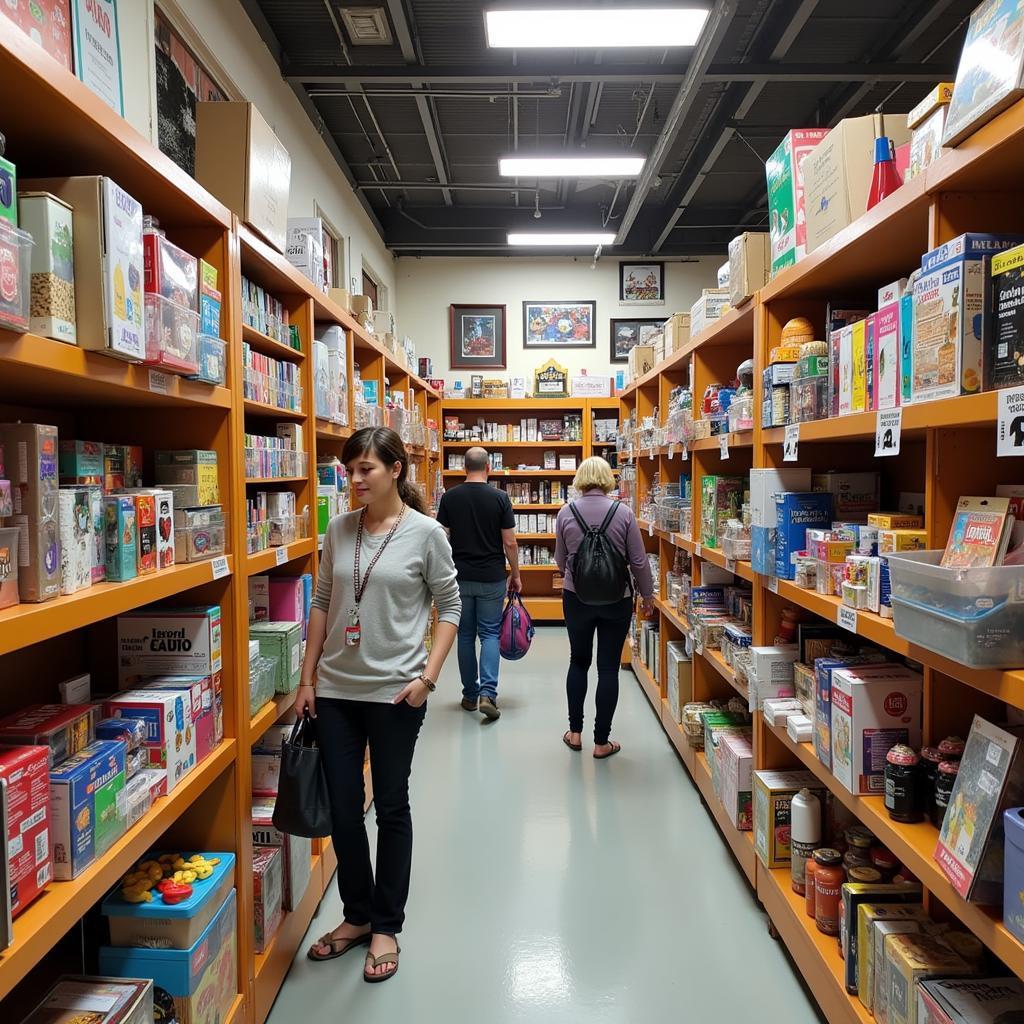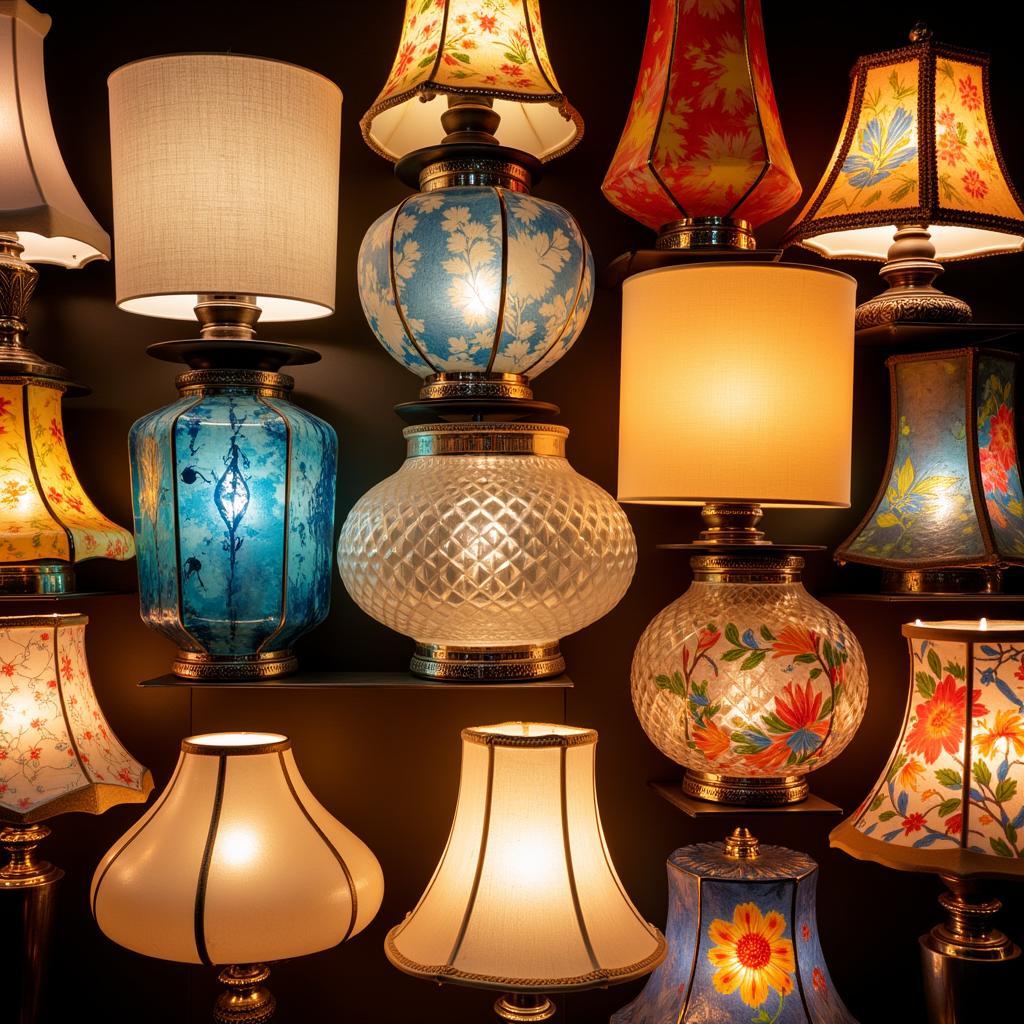Exploring the Vibrant World of Arte de Mexico
Arte De Mexico encapsulates a rich tapestry of artistic expression, reflecting the country’s vibrant history, culture, and traditions. From ancient Mayan murals to contemporary digital art, the term encompasses a vast spectrum of creative endeavors. This article delves into the fascinating world of Mexican art, exploring its diverse forms, influences, and enduring impact. After reading this, you’ll have a newfound appreciation for the artistry and craftsmanship that defines arte de Mexico. You can discover more about specific Mexican art forms, such as arte de mexico chandeliers, which showcase the country’s unique blend of traditional and modern aesthetics.
A Journey Through Mexican Art History
Mexican art history is a captivating narrative that spans millennia. Pre-Columbian civilizations, such as the Olmecs, Mayans, and Aztecs, laid the foundation with intricate carvings, monumental sculptures, and vibrant murals depicting their cosmology and daily life. These early forms of arte de Mexico demonstrate a profound connection to nature and spirituality. The Spanish conquest in the 16th century introduced European artistic styles, leading to a fusion of indigenous and colonial influences. This period saw the rise of Baroque art, evident in ornate churches and religious iconography.
The Rise of Mexican Muralism
The 20th century witnessed the emergence of Mexican Muralism, a powerful artistic movement that sought to reflect the social and political realities of post-revolutionary Mexico. Artists like Diego Rivera, José Clemente Orozco, and David Alfaro Siqueiros created large-scale murals that addressed themes of social justice, national identity, and the struggles of the working class. These monumental works became symbols of Mexican pride and continue to inspire artists today. Mexican muralism represents a pivotal moment in arte de Mexico, transforming public spaces into canvases for social commentary and artistic expression.
 Diego Rivera's murals depicting Mexican history and social struggles
Diego Rivera's murals depicting Mexican history and social struggles
Folk Art: A Celebration of Tradition
Beyond the grand murals and historical masterpieces, arte de Mexico also thrives in the vibrant expressions of folk art. From colorful ceramics and intricately woven textiles to whimsical alebrijes and elaborate Day of the Dead decorations, Mexican folk art reflects the creativity and ingenuity of its people. These art forms, often passed down through generations, preserve cultural traditions and tell stories of everyday life. Exploring traditional day of the dead art provides a fascinating glimpse into the cultural significance of this unique artistic tradition.
The Significance of Color and Symbolism
Color and symbolism play a crucial role in arte de Mexico. Vibrant hues, often derived from natural dyes, infuse life and energy into artistic creations. Symbolic motifs, drawn from indigenous beliefs and cultural narratives, add layers of meaning and depth to the artwork. For example, the monarch butterfly symbolizes migration and transformation, while the skull represents the cycle of life and death.
 Colorful alebrijes representing fantastical creatures
Colorful alebrijes representing fantastical creatures
Contemporary Arte de Mexico: A Fusion of Tradition and Innovation
Today, arte de Mexico continues to evolve, embracing new technologies and artistic approaches while remaining deeply rooted in its rich heritage. Contemporary Mexican artists are pushing boundaries and exploring new forms of expression, from digital art and installations to performance art and mixed media. This fusion of tradition and innovation ensures that arte de Mexico remains a dynamic and ever-evolving force in the global art scene. Discover canvas art mexico for a taste of how traditional motifs are being reinterpreted in contemporary mediums.
The Impact of Globalization
Globalization has played a significant role in shaping contemporary arte de Mexico, fostering cross-cultural exchange and influencing artistic trends. Mexican artists are increasingly engaging with global themes and collaborating with international counterparts, creating a vibrant dialogue between cultures. This exchange has broadened the reach of arte de Mexico, introducing its unique aesthetic and cultural narratives to a wider audience. You might even be interested in exploring related themes, such as arte tequila, which showcases the artistic craftsmanship behind this iconic Mexican spirit. Likewise, dos artes tequila blanco further illustrates this connection between artistry and tradition.
 A modern art installation incorporating traditional Mexican motifs
A modern art installation incorporating traditional Mexican motifs
Conclusion
Arte de Mexico is a testament to the country’s rich cultural heritage and enduring artistic spirit. From ancient murals to contemporary installations, Mexican art continues to captivate and inspire, reflecting the country’s vibrant history, traditions, and ongoing evolution. By exploring the diverse forms and expressions of arte de Mexico, we gain a deeper understanding of Mexican culture and its profound impact on the world of art.
FAQ
- What are some key characteristics of Mexican art?
- Who are some famous Mexican artists?
- Where can I see examples of Mexican art?
- How has Mexican art influenced other cultures?
- What is the significance of Day of the Dead art in Mexican culture?
- What are some common themes explored in Mexican art?
- How can I learn more about Mexican art history?
Need support? Contact us 24/7: Phone: 02462573573, Email: danteum@gmail.com Or visit us: Savico Megamall, 7-9 Đ. Nguyễn Văn Linh, Gia Thụy, Long Biên, Hà Nội 10000, Việt Nam.



